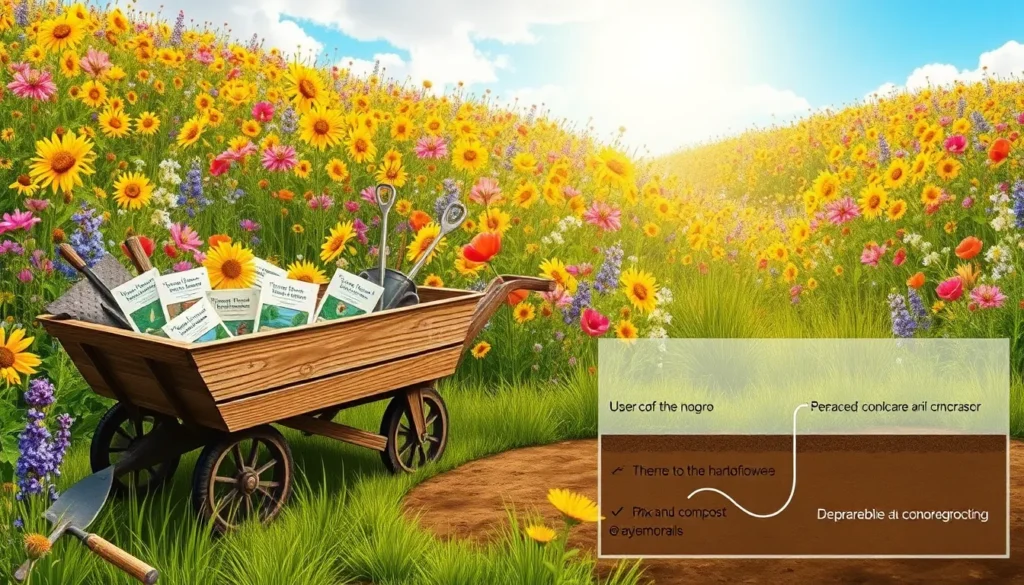Creating a wildflower meadow is like painting with the vibrant hues of nature itself, an endeavor that invites both seasoned gardeners and enthusiastic beginners to dive into a tapestry of colors and fragrances. As you embark on this rewarding journey, you’ll not only transform your landscape into a stunning visual feast but also foster a thriving ecosystem that supports pollinators and wildlife. The art of planting a wildflower meadow is both accessible and transformative, offering a sustainable sanctuary right in your backyard.
Whether you’re cultivating a small patch or an expansive field, the process can be as simple or intricate as you desire. In this article, we’ll explore six common steps to guide you through the enchanting process of establishing your own wildflower haven. From choosing the right location and selecting native seeds to understanding the subtleties of soil preparation and seasonal care, you’ll gather practical insights to make your meadow flourish. Each stage of this journey offers its own set of rewards, promising a garden that’s both beautiful and beneficial for years to come.
Choosing the Ideal Wildflower Mix
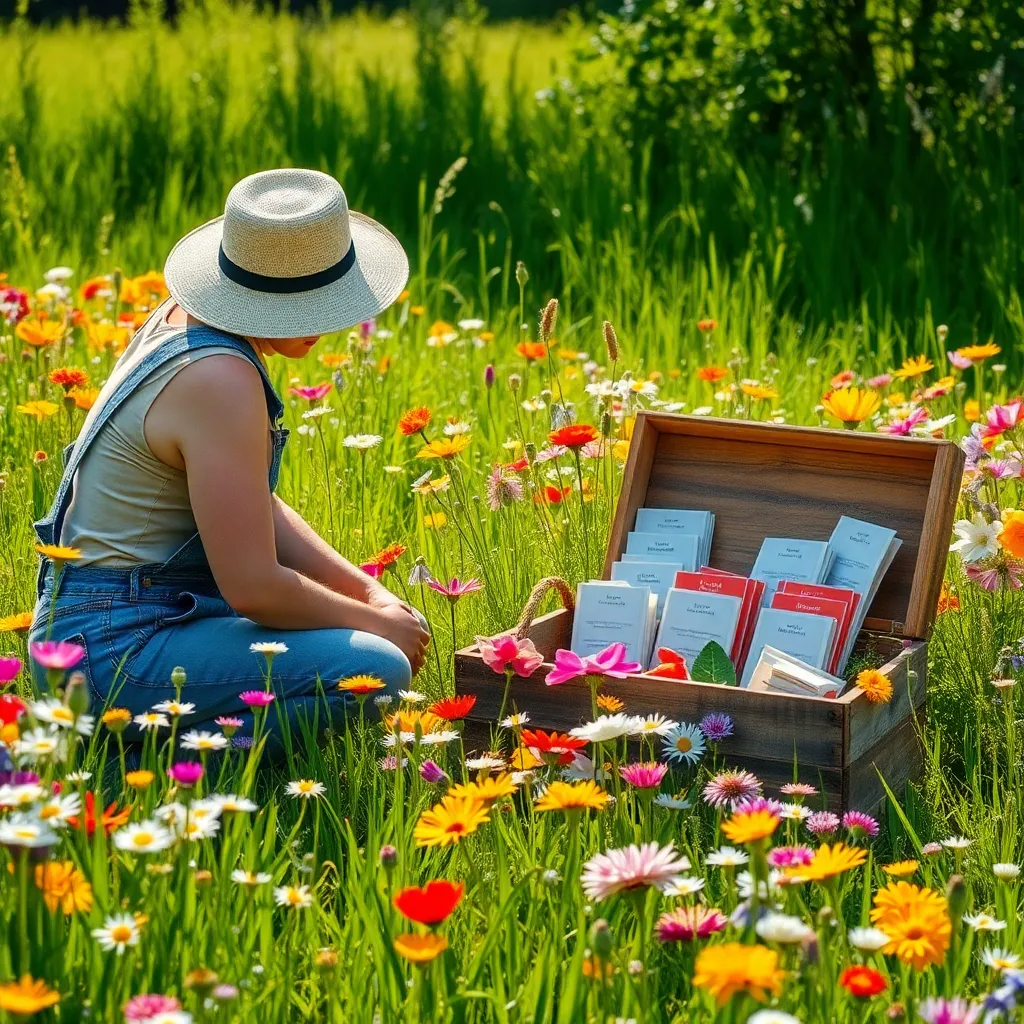
When choosing an ideal wildflower mix, it’s essential to consider your local climate and soil conditions. Wildflowers thrive best when they are suited to the environment they are planted in, so selecting a mix that matches your region will yield the most vibrant results.
Start by examining the sunlight exposure in your planting area. Most wildflowers require full sun, so ensure you have a spot that receives at least six hours of direct sunlight daily.
Soil type is another critical factor when selecting your wildflower mix. While many wildflowers are adaptable, well-draining soil is usually preferred, so consider adding sand or organic matter to improve drainage if necessary.
For beginners, opting for a pre-mixed wildflower seed package can simplify the process, as these mixes are often tailored to specific regions. These packages typically include a variety of species, ensuring continuous blooms throughout the growing season.
Experienced gardeners might consider creating a custom seed mix. To do this, research individual species known to thrive in your area and combine them to suit your specific preferences and conditions.
Watering is a crucial part of wildflower care, especially during germination. Ensure the soil remains consistently moist until seedlings are established, then gradually reduce watering to mimic natural rainfall patterns.
Preparing Your Meadow Site
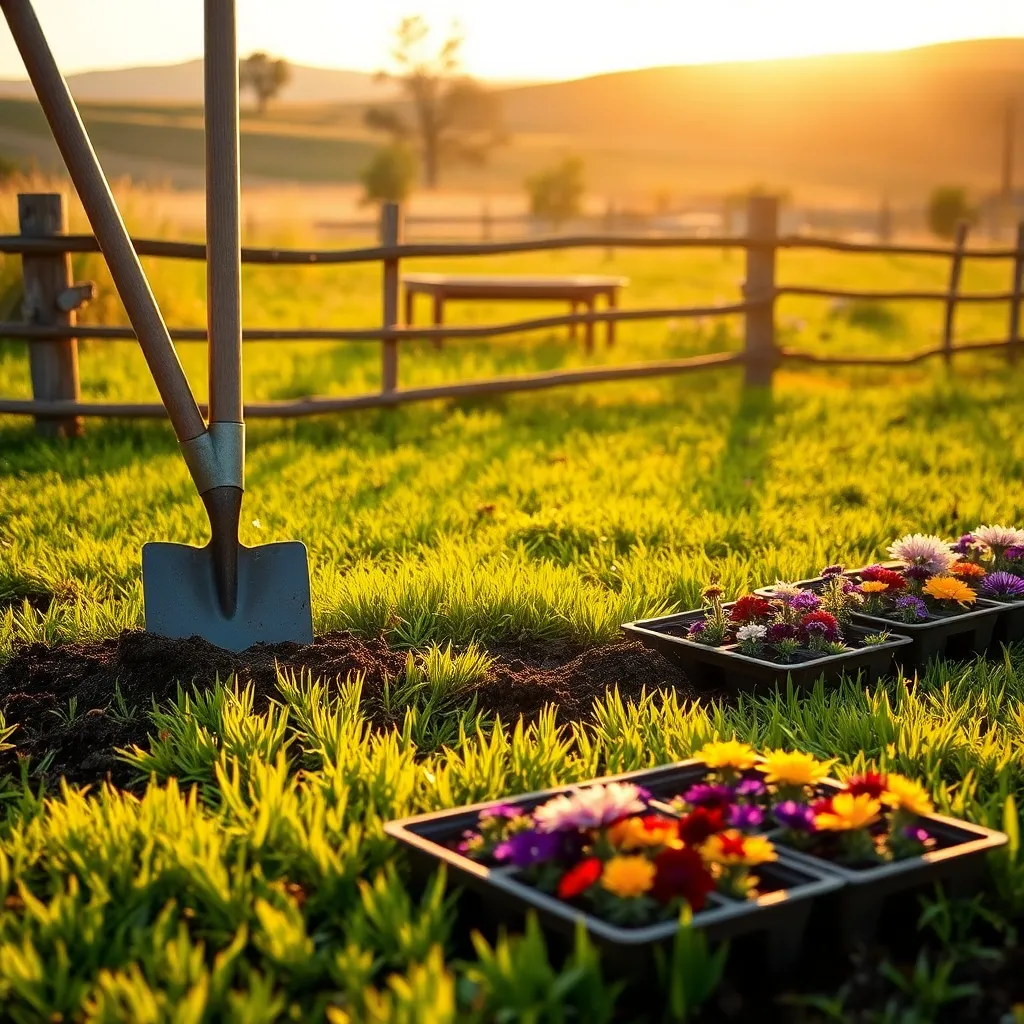
Before planting a wildflower meadow, it’s crucial to prepare your site properly to ensure the best growth conditions. Start by selecting an area that receives at least six hours of sunlight per day, as most wildflowers thrive in full sun.
Consider the soil type at your chosen location, as this will influence your wildflower selection. Wildflowers generally prefer well-draining soils, so you may need to amend heavy clay or overly sandy soils with organic matter like compost.
Remove existing vegetation to minimize competition for your wildflowers. This can be done by using a spade to dig out grass and weeds or by smothering them with a tarp for a few weeks before planting.
Once cleared, loosen the soil to a depth of about six inches using a rototiller or garden fork. This will help the wildflower roots establish more easily and enhance soil aeration, essential for healthy plant growth.
Optimal Planting Timeframes

Choosing the right time to plant your wildflower meadow is crucial for success. Generally, the best planting periods are in early spring or late autumn, when the soil is moist and warm enough for germination.
In spring, you can take advantage of the natural rainfall to help seeds settle and grow. Ensure the soil temperature is consistently above 55°F (13°C) to foster optimal germination conditions.
Opting for a late autumn planting allows seeds to naturally stratify over winter. This period of cold exposure can enhance germination rates for many wildflower species in the spring.
For gardeners in milder climates, where winters are not harsh, fall planting can provide a head start as seeds will establish roots before going dormant. However, keep an eye on the weather patterns and avoid planting just before heavy rains, which can wash away seeds.
Regardless of when you plant, proper soil preparation is essential. Ensure that your soil is well-drained and free from weeds, as competition for nutrients can hinder wildflower growth.
For those looking to experiment, try planting at both times of the year to see which season yields the best results in your specific location. This way, you can adjust and optimize your planting strategy for future seasons.
Sowing Seeds Effectively
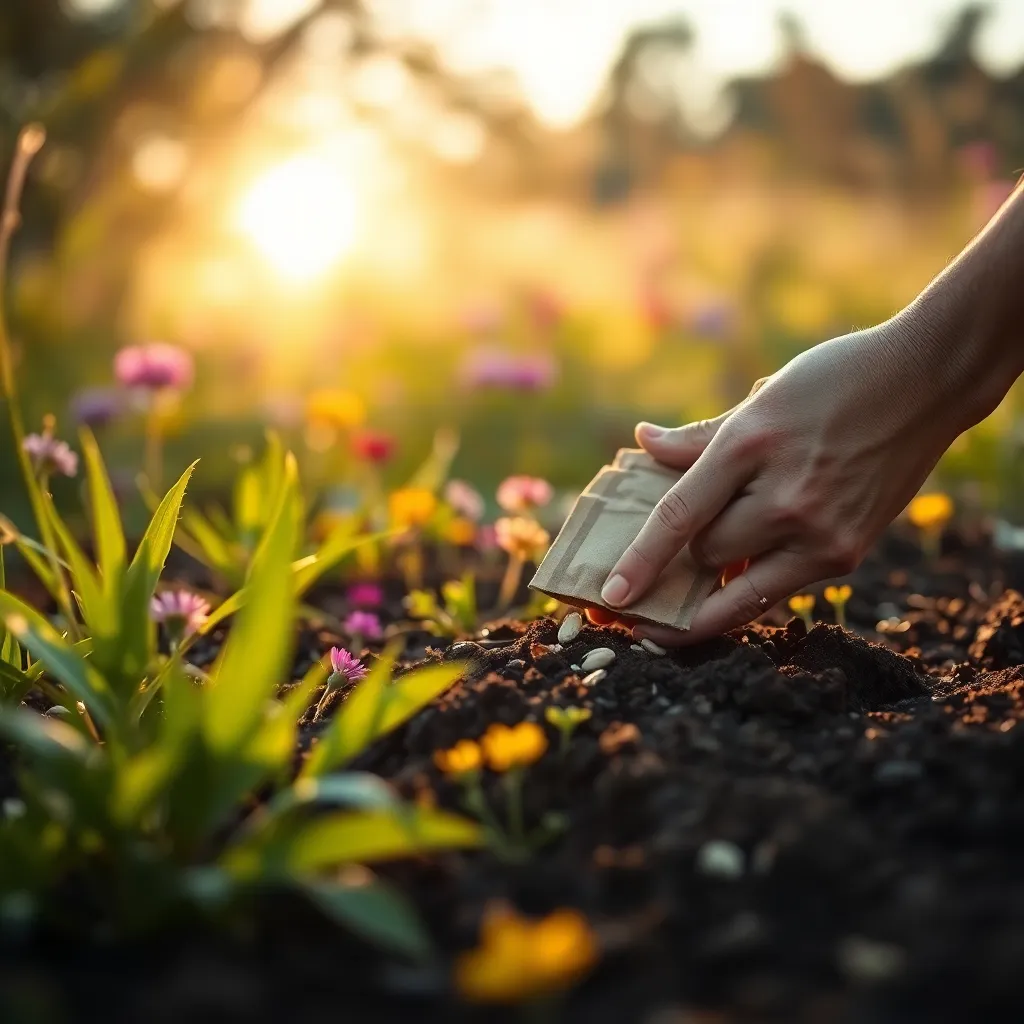
Properly sowing seeds is essential to successfully establishing a wildflower meadow. Begin by selecting a well-drained location with full sun exposure, as most wildflower species thrive under these conditions.
Prepare the soil by clearing any existing vegetation and loosening it to a depth of at least 4 to 6 inches. This will allow the wildflower seeds to establish strong roots and absorb nutrients effectively.
Scatter the seeds evenly over the prepared soil, aiming for a density that will encourage lush growth without overcrowding. Mixing the seeds with sand can help achieve even distribution and prevent clumping.
After sowing, lightly rake the soil to ensure good seed-to-soil contact, which is crucial for germination. Avoid burying the seeds too deeply, as many wildflower seeds require light to germinate.
Water the area gently and consistently, keeping the soil moist but not waterlogged until the seedlings are well-established. Regular watering is particularly important during dry spells to support initial growth.
For more experienced gardeners, consider incorporating a mix of annual and perennial species to achieve a dynamic and sustainable meadow. This approach will provide continuous blooms and enhance biodiversity within your garden.
Meadow Maintenance Essentials
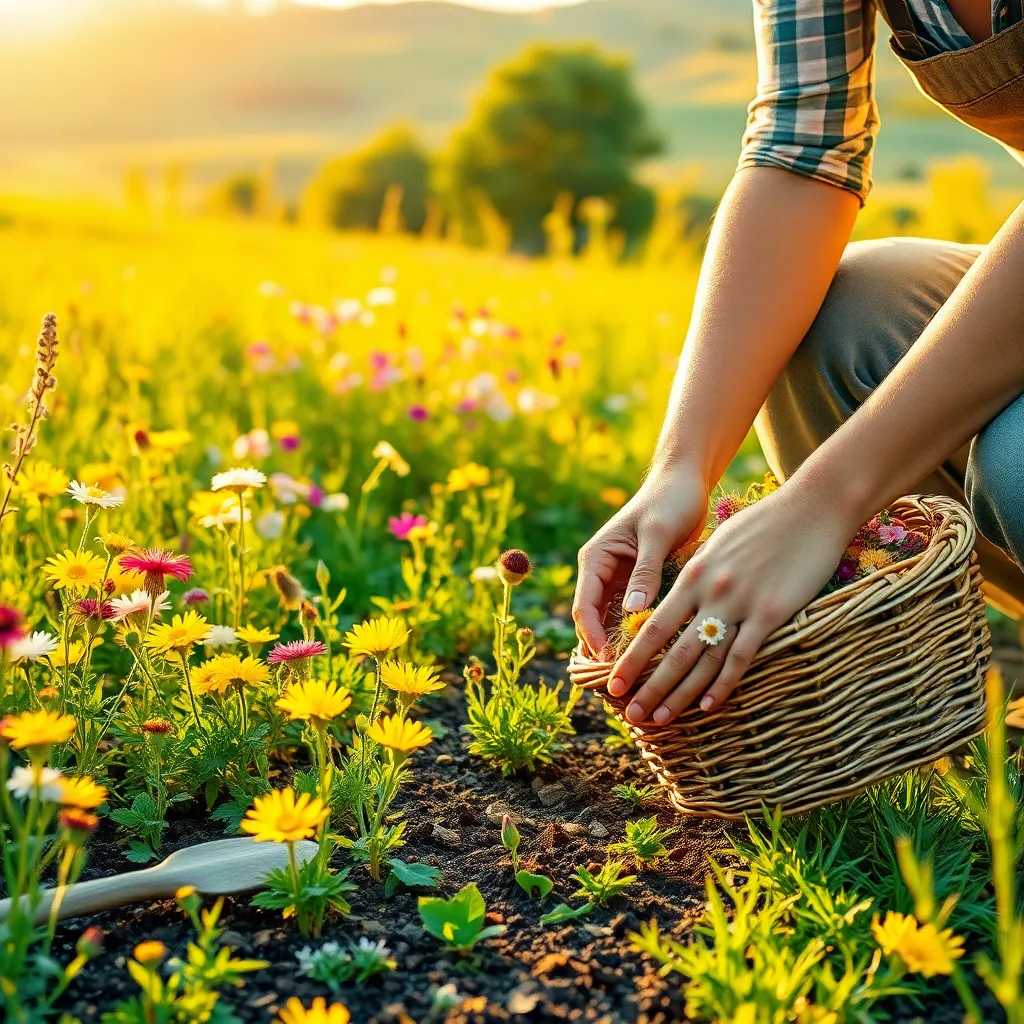
Maintaining a wildflower meadow begins with regular monitoring to ensure the health of your plants. Inspect your meadow weekly for signs of disease, pests, or invasive species that might need immediate attention.
Regular mowing is essential for the longevity of a wildflower meadow. Mow once or twice a year in late summer or early autumn to help control aggressive grasses and encourage the spread of wildflowers.
Consider the benefits of overseeding to fill any bare patches and enhance floral diversity. By spreading additional seeds in the fall, you can take advantage of natural winter conditions to improve germination rates.
Watering should be minimal once your meadow is established, as most wildflowers thrive in drier conditions. However, during extreme drought, occasional deep watering can help sustain your plants without encouraging weed growth.
To promote a healthy ecosystem, incorporate native plants which support local wildlife and require less maintenance. Research native species that thrive in your soil type and climate to ensure a balanced and vibrant meadow.
Encouraging Wildlife Diversity
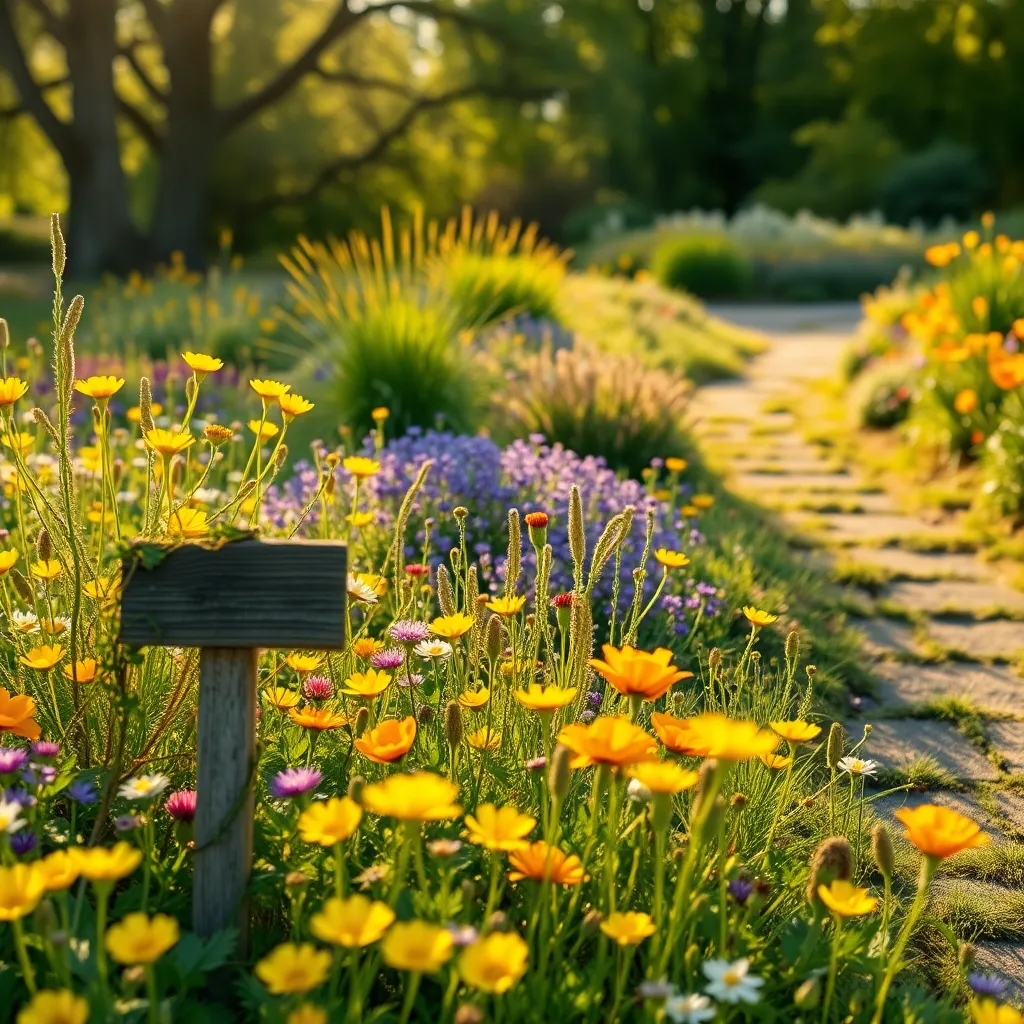
To encourage wildlife diversity in your wildflower meadow, start by selecting a variety of native plants. Native species are well adapted to local conditions and provide food and shelter for local wildlife, including pollinators like bees and butterflies.
Incorporate a mix of flowering plants that bloom at different times throughout the year. This ensures a continuous supply of nectar and pollen, supporting a wide range of insect life and, in turn, the birds and mammals that feed on them.
Consider adding a small pond or water feature as part of your meadow environment. Water sources are crucial for attracting amphibians and provide drinking and bathing spots for birds, greatly enhancing the biodiversity of your garden.
Limit the use of pesticides and herbicides to maintain a healthy ecosystem. Chemicals can disrupt the natural balance, harming beneficial insects and deterring birds and other wildlife from visiting your garden.
For more advanced gardeners, creating small habitat areas can further boost wildlife diversity. Consider building a log pile or a small rockery to offer shelter for insects, reptiles, and small mammals, making your meadow a haven for all kinds of creatures.
Conclusion: Growing Success with These Plants
In nurturing a flourishing wildflower meadow, we uncover profound lessons for cultivating our relationships. The six key concepts explored include understanding the soil of communication, choosing seeds of trust, providing sunlight through appreciation, ensuring water with consistent effort, protecting against weeds of misunderstanding, and allowing time for growth. Each step in tending to a meadow mirrors the dedication needed to nurture a thriving partnership.
To put these insights into practice, take a moment today to express genuine appreciation to your partner, planting a seed of positivity in your relationship’s garden. Recognize this as the first step in a continuous journey of growth and connection.
Bookmark this article as your guide to revisiting these essential concepts, ensuring they remain at the forefront of your relationship efforts. By doing so, you’ll have a handy reference, helping you cultivate a partnership that blooms beautifully over time.
Remember, every relationship has the potential to flourish, just like a well-cared-for meadow. With commitment and love, the path to relationship success is not only possible but filled with vibrant possibilities. Let these insights empower you to create and sustain the love you desire.

